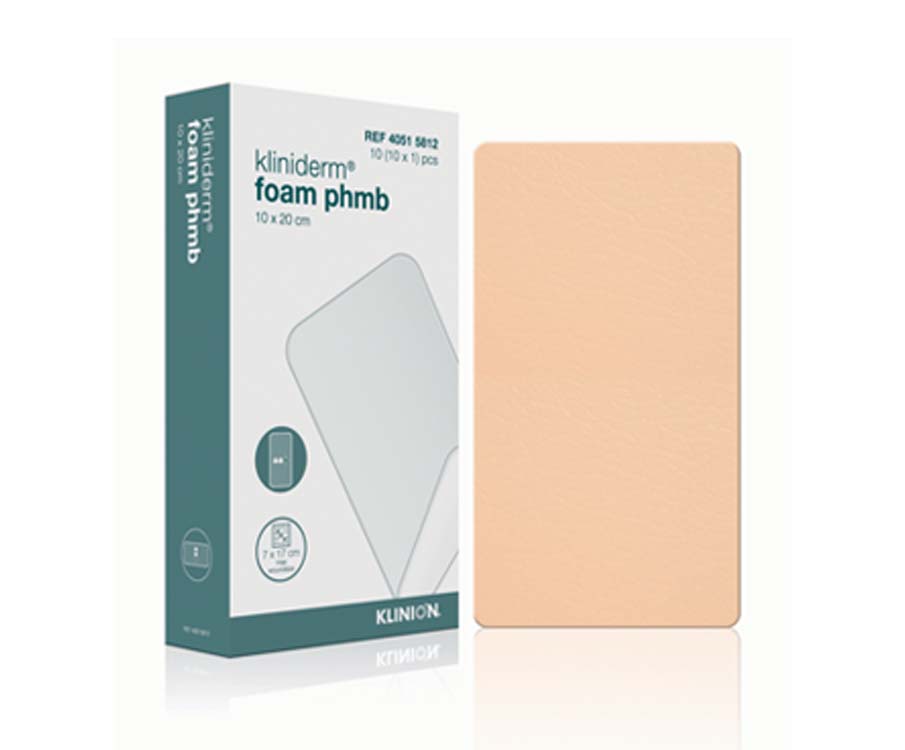Kliniderm Foam PHMB
About Kliniderm Foam PHMB
Kliniderm Foam PHMB is a sterile wound dressing which is made of polyurethane with 0.5% PHMB (polyhexamethylene biguanide) and 0.1% B-Panthenol. The dressing consists of a foam core with an open structure. The foam core absorbs and retains exudate, reducing maceration of the wound, wound margin area and healthy skin. The addition of the antimicrobial PHMB (polyhexamethylene biguanide) reduces and prevents the growth of bacteria in the wound and dressing. B-Panthenol has a moisturizing effect and improves the moisturization of the skin. Furthermore, the dressing has a breathable polyurethane top layer, which allows moisture to pass through from the inside and is bacterial and water resistant from the outside, thereby maintaining a moist wound environment.
Product benefits
- Protective barrier to micro organisms
- Up to 7 days wear time
- Suitable for use under compression
- For treatment of chronic and acute wounds
- Soft, comfortable and highly absorbent
- Sterile if pouch and seal are intact
- Suitable for use under compression.
- Can be cut to size if necessary
Indications
Kliniderm foam dressings are indicated for moderate to heavily exuding chronic and acute wounds and may be used throughout the healing process on the following wounds:
- Pressure ulcers
- Leg ulcers
- Foot ulcers
- Diabetic ulcers
- Surgical wounds
Contra-indications
Kliniderm Foam PHMB dressings are not indicated for use on:
- Dry or lightly exuding wounds
- Individuals with a known sensitivity to polyurethane films, foams or PHMB
Application instructions
Dry the surrounding areas of the wound thoroughly before dressing application. Clean, disinfect and treat the wound according to local protocol; apply the dressing on the wound and fixate with appropriate fixation devices.
- Select a size of Kliniderm non-adhesive PHMB Foam that is slightly larger than the wound. If necessary the dressing can be cut (using sterile scissors) to the wound size.
- Centre the dressing on the wound, ensuring the beige side is facing away from the wound and apply it gently to the wound site.
- Fix the dressing in place with a suitable tape or fixation bandage to ensure the dressing remains in position. Ensure the tape is applied to the edges only and does not cover the dressing, as it may affect its performance. Alternatively, if being used under compression therapy, tape is not required as the bandaging will hold the dressing in situ.
- Discard any remaining dressing material due to the risk of contamination.

